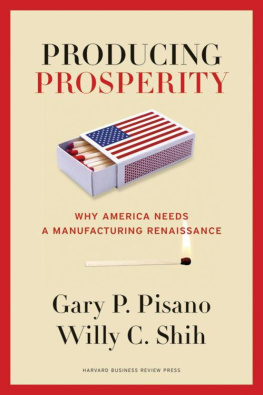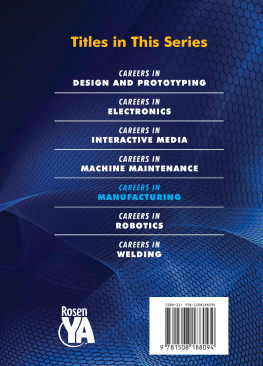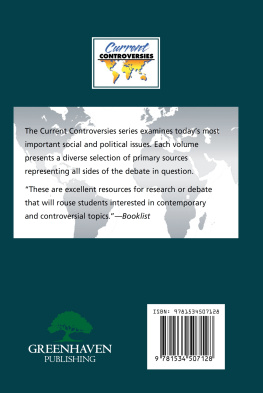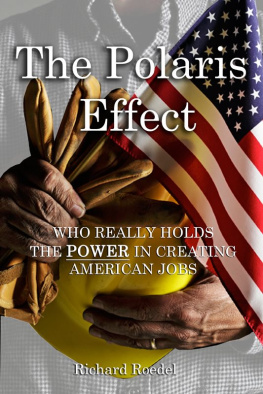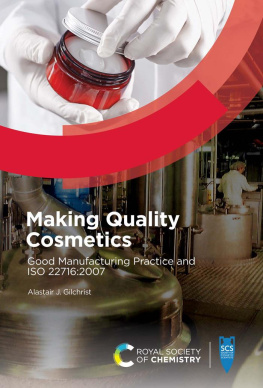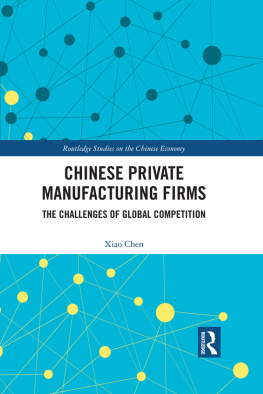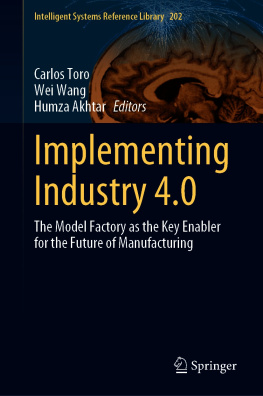Copyright 2012 Gary P. Pisano and Willy C. Shih
All rights reserved
No part of this publication may be reproduced, stored in or introduced into a retrieval system, or transmitted, in any form, or by any means (electronic, mechanical, photocopying, recording, or otherwise), without the prior permission of the publisher. Requests for permission should be directed to , or mailed to Permissions, Harvard Business School Publishing, 60 Harvard Way, Boston, Massachusetts 02163.
First eBook Edition: October 2012
ISBN: 978-1-4221-6268-2
For Alice and Julie
Contents
In 1950, manufacturing represented 27 percent of US gross domestic product (GDP) and employed 31 percent of the American workforce. By 2010, manufacturing was only 12 percent of GDP and employed 9 percent of the workforce. Should this trend worry Americans? That is the focal question of this book.
The question Does manufacturing matter? is not a new one. In the 1980s, books such as Restoring Our Competitive Edge (by our Harvard colleagues Robert Hayes and Steven Wheelwright) and Manufacturing Matters (by Berkeleys John Zysman and Stephen Cohen) argued that allowing manufacturing capabilities to erode would be hazardous to a countrys economic health. With the Internet boom of the 1990s and Japans stumbles, however, the issue of manufacturing appeared quaint. The United States was demonstrating its prowess in R&D, software, and services. The Internet spawned a host of new businesses. Electronics companies were prospering by focusing on R&D and outsourcing production to Asian suppliers. Many economists hailed the arrival of the post-industrial society and declared that the continued erosion of manufacturing was not just harmless, it was a healthy symptom of economic development: following the same path that agriculture had taken a century before, the shrinking manufacturing sector was now liberating resources so that they could be put to high-value-added uses in other sectors, such as services.
We have chosen to revisit this issue at this time for two reasons. First, the good times of the 1990s and 2000s were not as good as they first appeared. Average wages for Americans were stagnating, and trade deficits were piling up. Also, after surging in the 1990s, productivity growth slowed down in the 2000s. Meanwhile, in a broad swath of high-technology industries, the center of gravity for both manufacturing and innovation was moving to Asia. And this was all before the Great Recession of 2008! It struck us that the United States had been running a pretty high-stakes experiment: for decades, America has been betting that the erosion of its manufacturing base posed no harm to its long-term economic prospects. Given the stakes, we thought an examination of this assumption and a careful analysis of the data seemed worthwhile.
Our second reason for writing this book was to clarify what we thought were several distortions on both sides of the debate about the importance (or lack of importance) of manufacturing for an economy like Americas. On one side of the debate, there has been a misconception about the impact of manufacturing on jobs. Saving manufacturing is often equated with saving jobs. With fewer than one in ten members of the American workforce employed in manufacturing, though, it is hard to make the case that manufacturing can be a big job generatorespecially because productivity increases due to advances in technology and work processes are a major reason the number of manufacturing jobs in the United States has plunged. In other words, if we expect productivity to continue to increase (which would be a good thing), it gets harder to imagine how even a fairly large surge in manufacturing output would put much of a dent in the American employment picture. We do not deny that there may be a serious employment issue in America.
The fact that manufacturing is unlikely to drive significant job creation, though, often leads too quickly to the conclusion that it is therefore irrelevant. The fallacy in this thinking is quickly revealed by the following statistic: although manufacturing accounts for only 9 percent of the American workforce, the 1.5 million R&D workers employed by US companies in America account for less than 1 percent of the workforce. Yet, no one would suggest that R&D is unimportant to the health of the economy.
This leads us to the second misconception about manufacturing: it is a low-value-added commodity activity that requires low-skill workers and can be easily sourced from anywhere in the world. Unlike R&D, venture capital, or universities, manufacturing is viewed as outside the ecosystem of innovation. It is not knowledge work, to use the fashionable term. The assumption is that you can lose manufacturing as long as you have innovation. If you believe this portrait, then manufacturing is pass for an innovation-driven economy such as Americas.
This perspective, though, just does not square with our observations about what actually happens inside many manufacturing operations. In the course of our careers, we have visited hundreds of factories in just about every industry you can imagine and in just about every corner of the globe. The notion that manufacturing is some low-value-added, low-skill activity that is unconnected to innovation is increasingly a myth. Factories producing sophisticated goods such as biotechnology drugs, flat-panel displays, aircraft engines, semiconductors, specialty materials, and medical devices require very skilled workers who can operate highly complex pieces of precision equipment. In most factories we have visited, we have seen a lot more brain than brawn at work. Manufacturing has become knowledge work.
In addition, manufacturing has connections to the innovation process that often go completely unrecognized. One of us (Gary) spent much of his academic career conducting research on how products in technology-intensive contexts (e.g., biotechnology, medical devices, scientific instruments, and electronics) move their way from R&D into the market. The other (Willy) spent a good chunk of his professional career actually moving products from R&D to the market and running complex manufacturing and distribution operations in the United States, Mexico, Ireland, Japan, and China. From our contrasting vantage points, we came to a very similar conclusion: manufacturing is often highly integral to the innovation process, and the common assumption that the United States can prosper as an innovator without manufacturing is a dangerous one. Indeed, in some contexts, manufacturing is just as important to the innovation ecosystem as strong universities, outstanding R&D, and vibrant venture capital are. The loss of manufacturing competencies should deeply worry Americans.
The problem with these misconceptions about manufacturing is that they often lead to bad decisions by businesses and bad policies by government. For instance, we have seen companies outsource their manufacturing without considering the potential negative impact on their future ability to innovate. We have seen government policy makers ignore the potential value of investing in basic and applied research that might deepen US manufacturing capabilities that support a broad range of sectors. The combination of bad decisions by businesses and inadequate policies by government, we will argue in this book, is leading to an erosion of what we call Americas industrial commons the set of manufacturing and technical capabilities that support innovation across a broad range of industries.
Our goal in writing this book is to educate both business leaders and government policy makers about when and where manufacturing matters to an economy. Our thesis is that for the United States, manufacturing matters when it is integral to the process of innovation, and we will provide some frameworks to help identify when and where this is likely to be the case. We are clear that not all manufacturing is integral to innovation. Thus, ours is not a blanket call to save all manufacturing in the United States. It is a call to build manufacturing capabilities in those areas that provide a critical foundation for future innovation.

